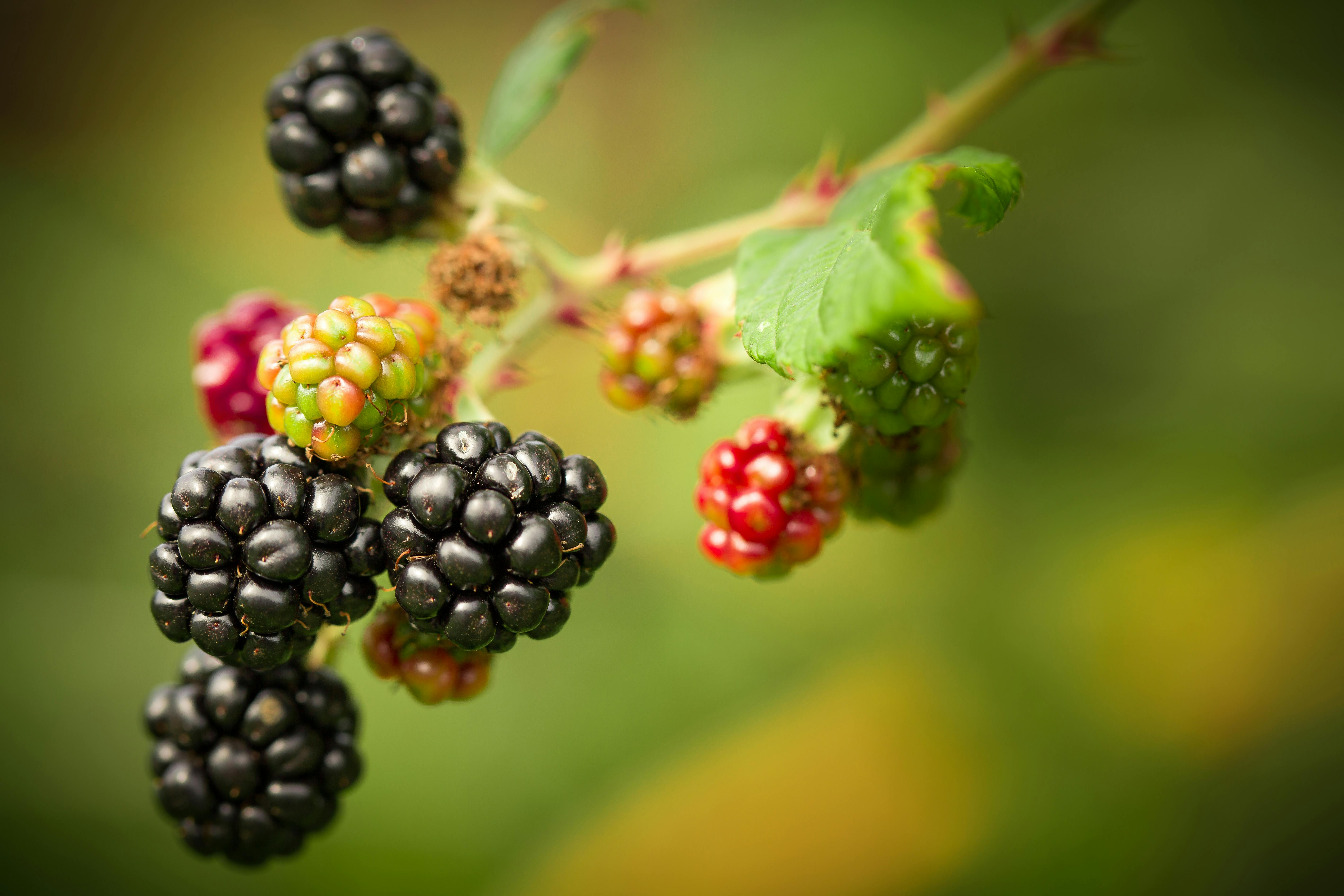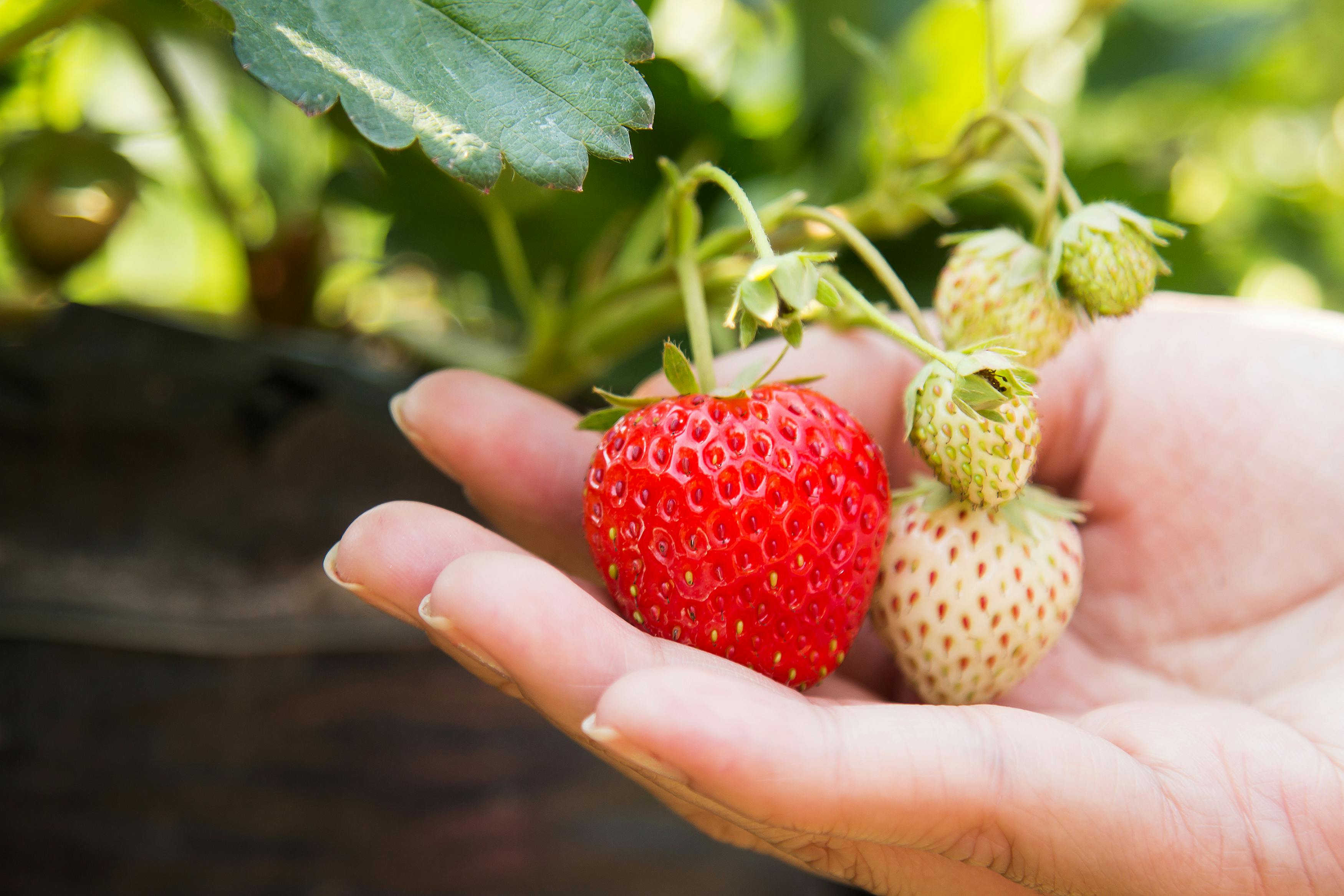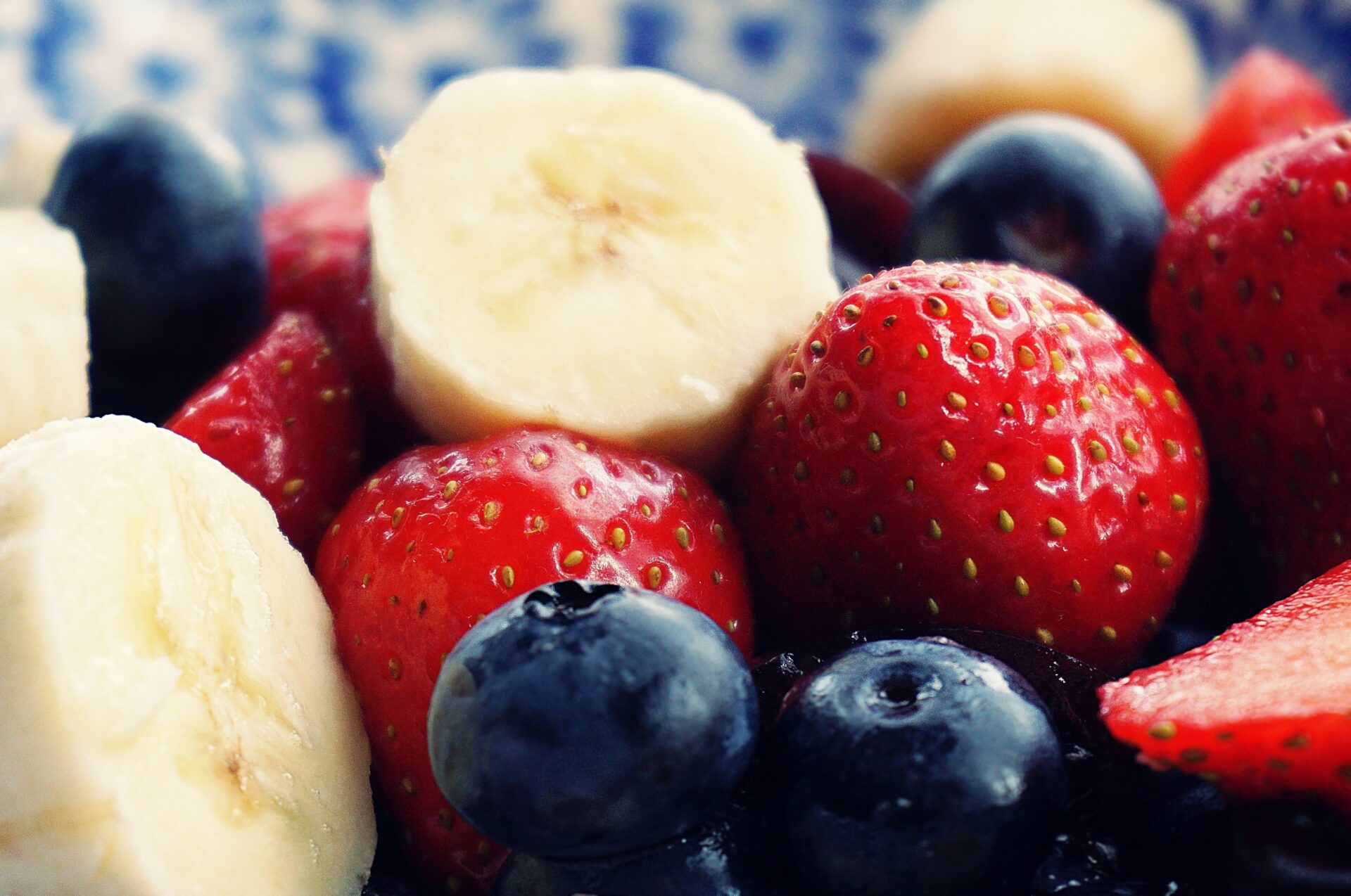Growing strawberries in Florida is a rewarding experience for any gardener. With the right variety, soil and climate conditions, you can easily grow delicious and juicy strawberries in your own backyard. This guide will provide you with some helpful tips and information on how to successfully grow strawberries in Florida.Planting strawberries in Florida is easy! To begin, select a location that receives at least six hours of direct sunlight each day and has well-drained soil. Prepare the soil by tilling it to a depth of 8-10 inches and adding 2-3 inches of compost or aged manure. Plant your strawberry plants 18-24 inches apart in rows 4-5 feet apart. Cover the roots with soil, water them well, and mulch with clean straw or hay to keep weeds down and maintain moisture. For the best results, fertilize your plants every month with a general fertilizer such as 10-10-10. Water regularly, especially during dry periods. You should start seeing berries within three months of planting!
Climate Requirements For Growing Strawberries In Florida
Growing strawberries in Florida requires a warm climate with plenty of sunshine and good drainage. The ideal temperature range for growing strawberries is between 65°F and 85°F, with the best growth occurring when temperatures are between 75°F and 85°F. The ideal day length for strawberry plants is 14-16 hours of sunlight per day. Strawberries can also tolerate some shade, but the best yields occur when they are grown in full sun.
Adequate soil drainage is important for successful strawberry production. The ideal soil pH for strawberries is between 5.5 and 6.5, but they can tolerate a wider range from 4.5 to 7.0. Sandy loam soils are preferred, but strawberries can be grown in a variety of soil types as long as they are well-drained.
Rainfall is important for strawberry production in Florida, with an average of 45 inches per year being recommended for optimal yields. Irrigation should also be used as needed during periods of drought or extended dry weather to ensure that the plants receive adequate moisture throughout the season.
Finally, adequate soil fertility is important for successful strawberry production in Florida. The soil should be tested before planting to determine which nutrients may need to be added to the soil to ensure optimal yields. Nitrogen, phosphorus, and potassium are the most important nutrients needed by strawberry plants and should be applied as needed according to a soil test report.
Overall, if you provide your strawberry plants with ample sunshine, adequate moisture, well-drained soils with good fertility levels, and temperatures within their preferred range, you will have success growing strawberries in Florida!
Selecting The Right Variety Of Strawberry For Florida
Strawberries are a popular and versatile fruit. They can be eaten fresh, frozen, or processed into jams, jellies, and syrups. In order to ensure a successful crop of strawberries in Florida, it is important to select the right variety for the region. It is important to consider the soil type, climate, and pest pressure when selecting a variety of strawberry for Florida.
The soil in Florida ranges from sandy loam to clay and can vary greatly across the state. It is important to select a variety that will thrive in the soil type found in your area. Also consider the climate when selecting a strawberry variety for Florida. The state has hot summers with temperatures reaching up to 95°F (35°C) and mild winters with temperatures ranging from 40°F (4°C) to 70°F (21°C). Choose a variety that can withstand both heat and cold temperatures if you live in an area with extreme weather changes.
In addition to soil type and climate considerations, it is also important to take into account pest pressure when selecting a strawberry variety for Florida. Pests such as aphids, thrips, spider mites, slugs, snails, and birds can all affect strawberry crops negatively. Choose varieties that are resistant or tolerant of these pests if possible. This will help reduce losses due to pest damage and increase yields.
It is also important to consider how long it takes for the strawberries to ripen when selecting a variety for Florida. Some varieties take longer than others to ripen so choose one that will fit your growing season best. Additionally, some varieties produce larger berries than others so if you plan on selling your berries at market choose one that produces larger fruit size.
Finally, it is important to consider taste when selecting a strawberry variety for Florida as some varieties have better flavor than others. Talk with other local growers or visit local farmers markets and taste test different varieties before making your decision on which one is best suited for your needs.
Selecting the right variety of strawberry for Florida requires careful consideration of various factors such as soil type, climate conditions, pest pressure, ripening times and berry size as well as taste preferences before making your final selection. Taking these factors into account will help ensure you have successful strawberry crop in Florida each year!
Preparing The Soil For Planting Strawberries In Florida
Preparing the soil for planting strawberries in Florida is an important step to ensure a healthy and productive crop. The soil needs to be well-drained, fertile, and free of weeds and pests. Before planting, the soil should be amended with organic matter such as compost or aged manure. This will improve the soil structure and help retain moisture. Additionally, it is important to test the soil for pH levels and adjust as needed to ensure optimal nutrient availability for the plants.
The best time to plant strawberries in Florida is during the cool season between October and March. This allows them to establish a good root system before summer heat sets in. For best results, choose an area with full sun exposure and well-drained soil. If planting in raised beds, make sure they are at least 6 inches deep with plenty of organic matter mixed into the soil. After planting, mulch around the plants with straw or pine needles to help retain moisture and suppress weeds.
Watering is an important part of caring for strawberry plants in Florida. During establishment (first 6 weeks) provide 1 inch of water per week either from rainfall or irrigation (drip or overhead). Once established, water 1-2 inches per week during dry periods. Overwatering can lead to disease problems so avoid saturating the soil around the plants. Proper fertilization is also essential for healthy strawberry plants in Florida – use a balanced fertilizer such as 10-10-10 or 8-24-24 at a rate of 1 pound per 100 square feet when plants begin growing actively in springtime.
Planting Strawberries In Florida
Strawberries are one of the most popular fruits in Florida and can be grown relatively easily. Planting strawberries in Florida is a rewarding experience for those looking to have a home garden or add to their existing landscape. If you’re considering planting strawberries, here are a few tips to help make sure your efforts are successful.
To start, you’ll need to choose the right variety of strawberry. Depending on where you live in Florida, different varieties may do better than others. For example, if you’re planting in the northern part of the state, look for varieties like ‘Strawberry Festival’ or ‘Ventana’ that can tolerate cold temperatures and produce large berries. In the southern part of the state, ‘Florida Radiance’ or ‘Crimson Treasure’ are good choices that can tolerate heat and humidity while still producing sweet fruits.
Once you have chosen your plants, make sure they have plenty of space to grow. Plant each strawberry plant 18 inches apart in rows that are at least 3 feet apart. This will give them plenty of room to spread out and develop strong roots. The soil should be well-drained and fertile with plenty of organic matter added in before planting.
When it comes time to water your strawberries, it is important not to overwater them as this can cause root rot and other problems. Aim for about 1 inch of water per week during dry spells and look out for signs of wilting or yellowing leaves which indicate that your plants need more water. Fertilizing regularly is also important for keeping up with the nutrient needs of your plants and helping them produce more fruit throughout the season.
Finally, when it comes time to harvest your strawberries be sure not to over-pick them as this can reduce your overall yield over time and affect future crops as well. Select only ripe berries that come off easily when touched gently and leave any unripe berries on the plant so they can continue to develop their sweetness over time. With proper care and attention, you should have a bumper crop of delicious strawberries year after year!

Fertilizing Strawberries In Florida
Fertilizing strawberries in Florida requires careful consideration for the best results. The soil in Florida is generally sandy and has a low organic content. This means that strawberry plants require extra nutrients to produce optimal yields. Fertilizers should be applied prior to planting and throughout the growing season to ensure that plants have access to the nutrients needed for successful growth and fruit production.
When choosing fertilizer for your strawberry plants, it is important to select one that is appropriate for the type of soil you have. For sandy soils, a balanced fertilizer with an N-P-K ratio of 8-8-8 or 10-10-10 will provide the necessary nutrients for your strawberry plants. For heavier soils, a fertilizer with a higher nitrogen content can be used such as 16-4-8 or 12-6-6. It is also important to select a fertilizer that contains micronutrients such as iron, zinc, manganese and copper. These micronutrients are essential for healthy growth and development of the fruit buds and flowers of your strawberry plants.
Fertilizer should be applied in late spring or early summer when your strawberry plants begin to bloom and form buds for fruit production. A slow release fertilizer should be used so that nutrients are released over a longer period of time to ensure consistent availability throughout the season. It is also important to apply fertilizer evenly over the area where you have planted your strawberries so that all plants benefit from it equally. Apply ½ pound of 10-10-10 fertilizer per 25 square feet of garden space each year during the growing season and water it in thoroughly after application.
Strawberry plants also benefit from side dressing with additional fertilizers throughout their growing season. Side dressing involves applying additional fertilizer around individual plant crowns once every two weeks during periods of active growth (late spring through early fall). Use an organic liquid fertilizer such as fish emulsion or seaweed extract diluted with water (follow package directions) or a granular slow release fertilizer at a rate of one teaspoon per plant each time you side dress them. Make sure you water thoroughly after applying either type of side dressing fertilizers so they are absorbed into the soil more quickly.
Watering and Mulching Strawberries in Florida
Watering and mulching strawberries in Florida is an important part of maintaining a healthy crop. The hot, humid climate of the state of Florida requires proper watering and mulching practices to keep strawberry plants thriving. Proper watering and mulching will help to keep the soil moist, reduce weeds, and improve root development.
When watering strawberries in Florida, it is important to water deeply and evenly. Water should be applied at the base of the plants, rather than on the leaves. This will reduce diseases caused by fungal spores that thrive in damp conditions. Water should be applied once or twice a week depending on the weather conditions, with more frequent waterings during dry spells.
Mulching also plays an important role in keeping strawberries healthy in Florida’s hot climate. Mulch helps to conserve moisture, control weeds, and insulate the soil from temperature fluctuations. Organic mulches such as straw or hay work best for strawberry plants because they can decompose over time and add nutrients to the soil. It is important to use a layer of mulch that is at least two inches thick so that it can effectively retain moisture and insulate the roots from extreme temperatures.
In conclusion, proper watering and mulching are essential for maintaining healthy strawberry plants in Florida’s hot climate. Water should be applied deeply at the base of plants once or twice a week depending on weather conditions. Mulch should be used as well to conserve moisture, control weeds, and protect roots from extreme temperatures. By following these practices, you can ensure a bountiful crop of delicious strawberries!
Controlling Weeds and Pests When Growing Strawberries in Florida
Growing strawberries in Florida requires diligent weed and pest control practices. Weeds compete with the plants for essential nutrients, water, and light, while pests can spread disease throughout the crop. To ensure successful strawberry production, it is important to keep a close eye on weeds and pests throughout the season.
To control weeds, hand-weeding is usually the best option for strawberry beds. This should be done regularly to prevent weed seeds from maturing into plants. Mulching can also be used to reduce the number of weeds that sprout up in the strawberry bed by blocking sunlight from reaching weed seeds. For more persistent weeds, herbicides can be used to effectively kill unwanted vegetation.
Pest control for strawberries in Florida begins with monitoring for common pests such as foliage-feeding caterpillars, slugs, aphids, mites, snails, whiteflies, and thrips. These pests can damage leaves or spread diseases that weaken plants or cause fruit rotting. To manage these pests organically, sticky traps can be used to monitor their presence and horticultural oils are effective at killing them if needed. Insecticide sprays may also be necessary in some cases when pest populations are too high for organic methods to handle alone.
In addition to controlling weeds and pests throughout the season, it is important to practice good crop rotation techniques to help reduce problems with both of these issues over time. Rotating crops will help break up cycles of weed or pest infestations by introducing new varieties of plants into your garden which will reduce competition between existing strawberry plants and competing vegetation while also allowing beneficial insects more opportunities to feed on any pest populations that may arise.
With proper care and maintenance practices such as these in place, you should have a successful strawberry crop each year in Florida!

Conclusion
Growing strawberries in Florida can be a rewarding and exciting experience. With the right variety, preparation, and maintenance, you can produce delicious, sweet fruits for yourself and your family. The best time to start planting your strawberries is during the winter months as this will give the plants plenty of time to establish themselves before the summer heat arrives. Additionally, you should ensure you have a regular watering schedule and use organic fertilizers to keep your plants healthy and productive. Finally, it’s important to monitor for pests and diseases so that you can take appropriate measures if needed. With these tips in mind, you’re sure to have a successful harvest of delicious strawberries!
Happy gardening!



